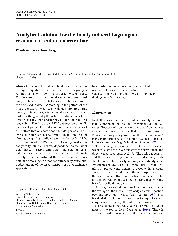摘要
In a weakly nonlinear tidal system, the depth-averaged equations for the first-order Lagrangian residual velocity (LRV) are deduced systematically. For the case of a narrow bay, the equations are solved analytically and the results for a specific bottom profile are discussed in detail. According to the pattern of the first-order LRV, the bay can be divided into three parts, namely an inner part, a transitional zone, and an outer part. For the given depth profile, the streamline of the first-order LRV for a shorter bay is a part of that for a longer bay. The first-order LRV depends on a nondimensional parameter that combines the influences of the bottom friction coefficient, the tidal period and the averaged water depth. The form of the bottom friction also has a significant influence on the first-order LRV. The second-order LRV, i.e., the Lagrangian drift, is analytically solved and shows dependence on the initial tidal phase. The LRV differs from the Eulerian residual transport velocity both quantitatively and qualitatively. It is demonstrated that the residual currents obtained according to other definitions may cause misunderstanding of the mass transport in water exchange applications.
- 出版日期2011-4
- 单位中国海洋大学
